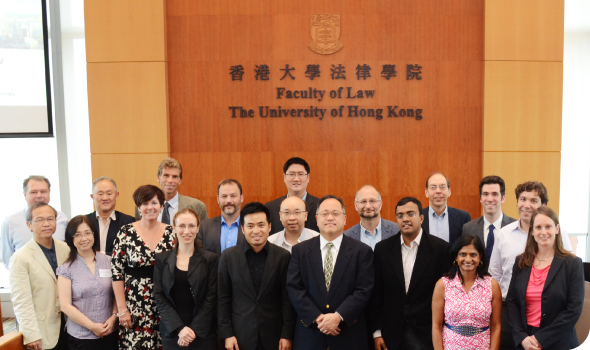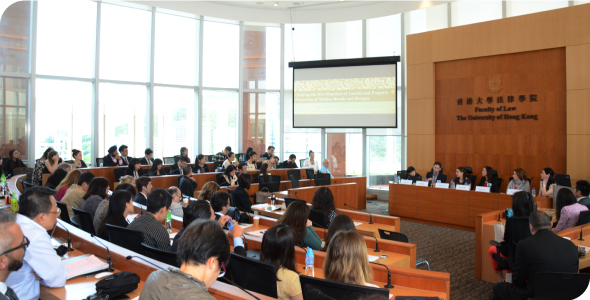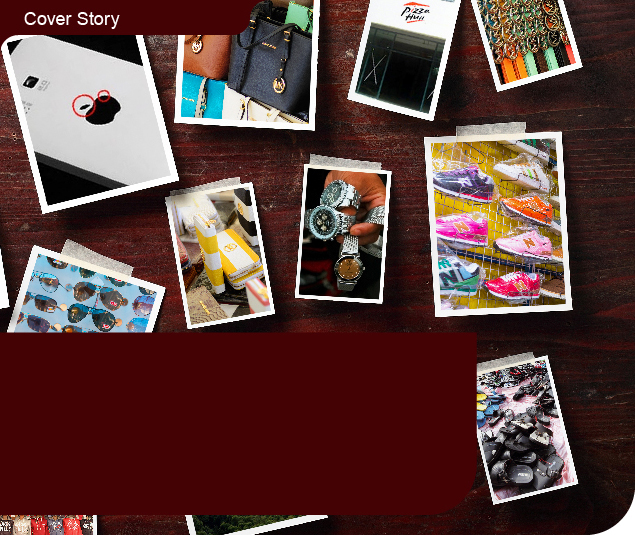The HiPhone in China makes no bones about which brand it is imitating. It looks like an iPhone and its advertising slogan is ‘Not an iPhone but better than an iPhone’. Does it matter that it uses the Apple brand to promote itself?
Sun Haochen, Assistant Professor in Law, has been considering this issue from both legal and social justice perspectives. He has written two academic papers, lectured to government officials, organised an international conference and is preparing to launch a blog on the topic.
The HiPhone, he explained, is part of the shanzhai phenomenon in China in which companies violate IP laws or take advantage of grey areas by copying others’ property, either directly or in more creative ways. This was not necessarily a bad thing, he said.
“The luxury industry has been arguing that IP protection should be strengthened, especially through enforcement, because piracy activity threatens their business. China in particular has a bad reputation for piracy.
“But that might also harm the interests of the poor. These shanzhai companies help to disseminate high technologies to low-income people. To be able to do that, they can’t afford strong marketing or branding teams. Imitation saves on their costs so they can spend more on developing their technologies.”
At first blush the shanzhai phenomenon seems to be a new form of intellectual property piracy and counterfeiting activity in China… But [it] has substantive and symbolic value for redistributing technological and cultural resources and redistributing the sources of innovation.
Sun HaochenShanzhai vs piracy
Mr Sun does not equate shanzhai with piracy, which involves a direct replication of goods. Shanzhai instead focusses on brands and he has identified three types of shanzhai. One is imitative copying, for instance by adopting a similar name such as HiPhone. One can also find oMcMcDonald’s, Bucksstar Coffee and Pizza Huh in Mainland China.
The second is dilutive copying, which blurs the distinctiveness of a product. For example the BaiGooHoo search engine claims to incorporate the best features of Baidu search engine, Google and Yahoo.
The third is transformative copying, which adds something new. For instance, the mascots of the Beijing Summer Olympic Games were turned into Transformer toys.
“At first blush the shanzhai phenomenon seems to be a new form of IP piracy and counterfeiting activity in China,” he said. “It challenges the legitimacy of IP law as a whole and signals that unauthorised use of IP is not necessarily illegitimate.
“But the shanzhai phenomenon has substantive and symbolic value for redistributing technological and cultural resources and redistributing the sources of innovation. IP law should be used as a tool to penalise the shanzhai products and activities that amount to blatant, wilful infringements of IP rights, it should not be used to suppress this phenomenon as a whole.”
 A joint conference on ‘Value Pluralism and Intellectual Property Law’ Mr Sun co-organised with the University of Pennsylvania Law School on behalf of the Faculty of Law.
A joint conference on ‘Value Pluralism and Intellectual Property Law’ Mr Sun co-organised with the University of Pennsylvania Law School on behalf of the Faculty of Law.
Promoting social responsibilityin the luxury trade
Moreover, Mr Sun thinks IP rights could be used to encourage the trade to go a step further in terms of corporate social responsibility and tie their IP protection to a wider social justice agenda.
“In 2011 people spent about US$250 billion on luxury goods on the global level, but in the same year 15 million children died of hunger. Why are consumers so willing to spend so much on luxury goods? Why aren’t they willing to divert a small portion of money to help children who are dying? I’ve been thinking of how to deal with this ethical crisis.”
He proposes using trademark law to require firms to disseminate brochures on world hunger (or other pertinent topics) to their customers at the point of sale, when they seek anti-dilution protection under the law. Currently, this protection is based largely on a firm’s economic activities such as advertising and sales. “It would give a value to ethical responsibility,” he said.
Mr Sun is also interested in helping the fashion industry by promoting a better understanding of legal protection for fashion designs and brands from not only piracy (which some argue helps to advertise products) but also competitors (for example, Christian Louboutin sued Yves Saint Laurent over its red-soled shoes).
“The luxury industry has shown people how to improve their lifestyles and it is a very important sector of the economy. I want to generate a deeper understanding of the role of IP in promoting this industry. At the same time luxury consumers control much of society’s political and economic resources and I want to engage them in promoting social justice,” he said.
“I want to promote the luxury industry not just economically but also ethically” – and by doing, help to spread the riches of the rag trade.■
 Mr Sun organised a conference titled ‘Charting the New Frontiers of Intellectual Property Protection of Fashion Brands and Designs’ in May, 2014.
Mr Sun organised a conference titled ‘Charting the New Frontiers of Intellectual Property Protection of Fashion Brands and Designs’ in May, 2014.


